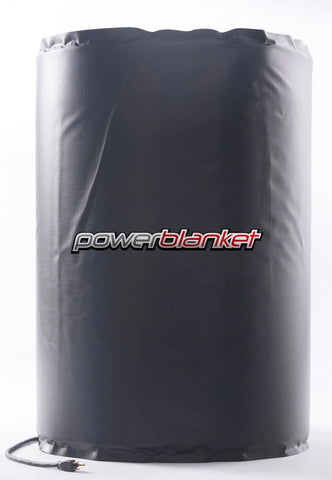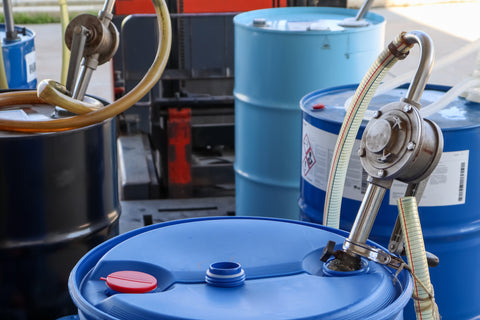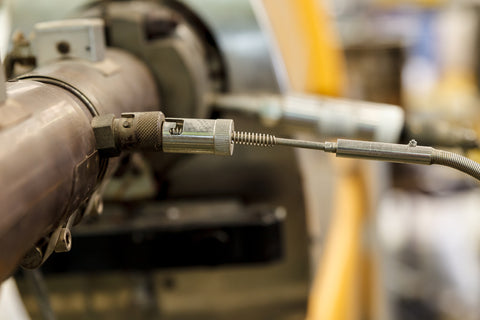Embracing the Cold with Spray Foam Insulation
As the chill of winter sets in, the quest for a warm and cozy home becomes more urgent than ever. The battle against the cold is about comfort, efficiency, and sustainability. With rising heating costs and the environmental impact of energy use a growing concern, homeowners are turning to innovative solutions to protect their sanctuaries from the winter's grasp. Among these solutions, spray foam insulation emerges as a champion, offering unparalleled protection against the cold. This introduction will guide you through the significance of proper insulation during the colder months and highlight cold weather spray foam insulation's role as a superior solution.
Types of Spray Foam Insulation
Spray foam is divided into two main types: open-cell and closed-cell. Open-cell foam is lighter and more flexible, making it an ideal choice for indoor applications where sound dampening is a priority, as it allows for better air movement. On the other hand, closed-cell foam provides a denser, more moisture-resistant barrier, making it suitable for both indoor and outdoor use. This type of foam insulation is especially beneficial in cold temperatures, where its superior R-value and ability to block moisture contribute significantly to a building's thermal efficiency. Additionally, closed-cell spray foam's robustness makes it an excellent option for adding structural strength to the insulated areas.
Benefits of Spray Foam Insulation
Spray foam's key advantages include its superior air leakage prevention and energy efficiency. By forming a tight seal, spray foam insulation significantly reduces heating costs and improves indoor air quality, making it an investment in comfort and sustainability.

Challenges of Applying Spray Foam in Cold Weather
Temperature Limits for Application
Spraying foam insulation in cold weather presents unique challenges. Similar to paint and other construction liquids, the material requires a specific temperature range for optimal application, with the air and substrate temperatures playing critical roles. Spray foam insulation stands out remarkably. As a form of building insulation, it delivers exceptional thermal resistance and acts as an effective sound barrier. To maintain its quality, spray foam must be stored and used within a temperature range of 70 to 80 degrees Fahrenheit. Additionally, it typically bonds best when the temperature of the surface it's applied to is at least 60 degrees Fahrenheit. Although it is possible to apply spray foam insulation in colder conditions, several considerations should be made before embarking on a spray foam application in chilly weather.

Common Cold Weather Application Issues
In cold climates, moisture can become a significant concern, potentially affecting the foam's ability to adhere correctly and cure. It is crucial to prepare the substrate by ensuring it is dry and within the right temperature range.
How cold is too cold for spray foam?
Applying spray foam insulation becomes problematic when air and substrate temperatures drop below 60 degrees Fahrenheit, as these conditions can hinder proper adhesion and curing.
What spray foam can be applied in cold weather?
Winter blend spray foam formulations are specifically designed for cold weather conditions. However, if you utilize external heating jackets for spray foam containers, you can realistically use any spray foam insulation.
What temperature can you apply Great Stuff spray foam?/Can you use Great Stuff foam in cold weather?
Great Stuff spray foam can be applied in temperatures as low as 20 degrees Fahrenheit, making it suitable for cold weather use.
Preparatory Steps for Cold Weather Application
Ensuring the Right Conditions
Achieving the right temperature is essential. A laser thermometer can help monitor the substrate's temperature, while heated systems can maintain the spray foam at an optimal temperature. This precision ensures that the cold weather spray foam insulation adheres and expands correctly, even in lower ambient temperatures.
Equipment Adjustments
Adjusting your equipment for winter applications may involve using heated hoses or adjusting the pressure settings on your spray foam drums to ensure the material maintains its ideal viscosity and temperature. These adjustments are crucial to prevent the foam from becoming too thick to spray or too thin to provide effective insulation.
Optimizing Temperature Control for Spray Foam Application
Successfully applying spray foam insulation in cold weather hinges on maintaining the material at the correct temperature. Fortunately, advancements in insulation application technology have introduced several tools designed to mitigate temperature-related challenges, ensuring spray foam retains its optimal properties during application. Among these innovations are spray foam cylinders and board box heaters, essential for any contractor facing the unpredictable conditions of cold weather installation.
Spray Foam Cylinder and board box heaters are specifically engineered to keep spray foam at its ideal temperature. These heaters use heating elements to maintain the foam insulation within the recommended temperature range, even when ambient temperatures drop significantly. This feature is crucial for preventing the material from becoming too cold and thick, which can hamper its ability to be sprayed evenly and adhere properly. These heaters wrap around the spray foam drums, delivering consistent warmth and preventing the contents from cooling. The gentle, steady heat ensures the spray foam maintains its perfect viscosity for application, facilitating a smoother, more uniform application process. Products like barrel heaters can also be used as the various sizes can be used on the wide variety of spray foam containers on the market. By employing these heaters, contractors can avoid the common cold-weather pitfalls of uneven application and inadequate coverage.
These temperature control tools are not just conveniences but necessities for applying spray foam insulation in colder climates. By incorporating spray foam cylinder and board box heaters into their equipment arsenal, insulation contractors can create a prime application environment that compensates for the cold and ensures the spray foam expands and adheres as intended.
Tips for Successful Spray Foam Insulation in Winter
Selecting the Right Spray Foam
Choosing a winter blend spray foam can make a significant difference. These formulas are designed to withstand colder environmental conditions, ensuring proper adhesion and curing even in low temperatures. Opting for a cold-weather spray foam formula minimizes the risk of application issues and maximizes insulation performance.
Application Techniques
Technique matters when using spray foam insulation in cold weather. Ensuring the foam expands and adheres properly requires adjusting your approach to account for cold substrates and air temperatures. Spraying at the right angle and distance can help achieve even coverage and optimal insulation thickness. When using spray foam insulation, it's crucial to consider the specific characteristics of both open-cell and closed-cell varieties. For instance, closed-cell spray foam requires more precision due to its denser composition and quicker curing time. Applying it correctly the first time is essential to avoid gaps and ensure a continuous barrier against cold air. Meanwhile, open-cell spray foam, while more forgiving due to its expansive nature, still demands careful application to ensure it fills cavities thoroughly without leaving voids that could compromise insulation performance. Both types require an experienced contractor who understands how to adjust the application technique based on the ambient temperature and substrate conditions to ensure the insulation adheres properly and performs optimally.
Safety and Environmental Considerations
Handling Toxic Fumes
Ventilation is paramount when spraying foam insulation, as the process can release toxic fumes. Proper protective gear and adequate airflow can mitigate these risks.
Ensuring Proper Ventilation
Creating a suitable environment for the foam to cure is critical not only for the insulation's effectiveness but also for the safety of the home's occupants. Strategies such as opening windows or using fans can help maintain good air quality during and after application. This is particularly important when installing spray foam insulation in closed environments or during the colder months when natural ventilation is limited.

Sealing Warmth in with Expertise and Precision
Insulating your home with spray foam in the winter requires careful planning and execution, but the benefits are undeniable. From significant energy savings to enhanced comfort, the right approach to spray foam insulation can transform your home into a warm, efficient haven against the cold. By understanding the specific challenges of cold weather application and enlisting the help of experienced professionals, you can ensure the success of your insulation project, regardless of the temperature outside.
This comprehensive guide to spray foam insulation in winter has explored the crucial aspects of choosing the right materials, preparing for application, and the importance of professional expertise. With these tips for success, homeowners can confidently approach their insulation projects, armed with the knowledge needed to navigate the cold weather challenges and achieve optimal results. Whether you're updating your existing insulation or starting from scratch, remember that the effort and investment in quality spray foam insulation will pay dividends in comfort and cost savings for years.









